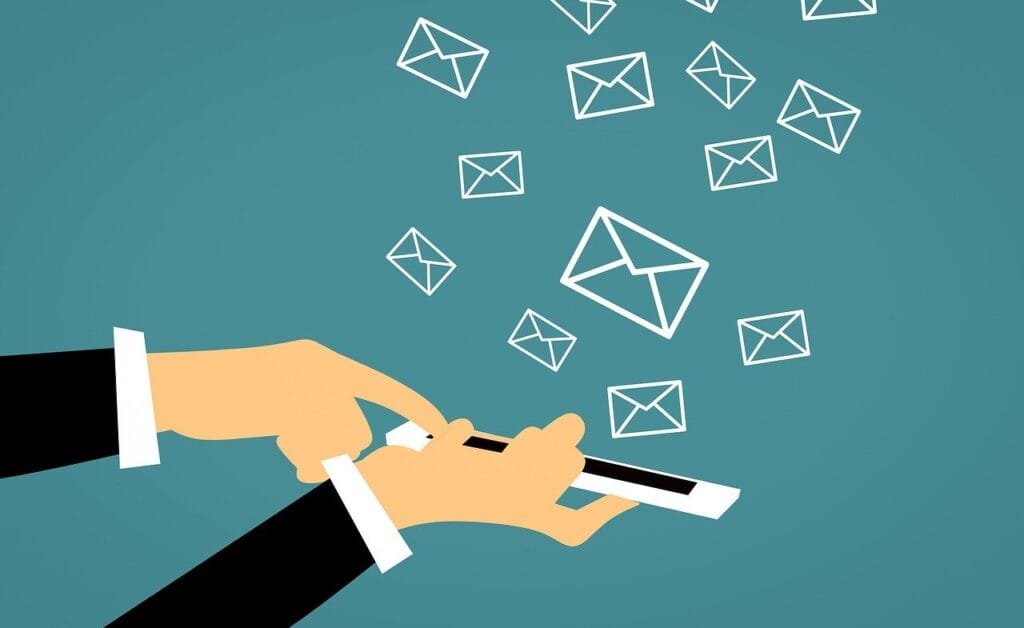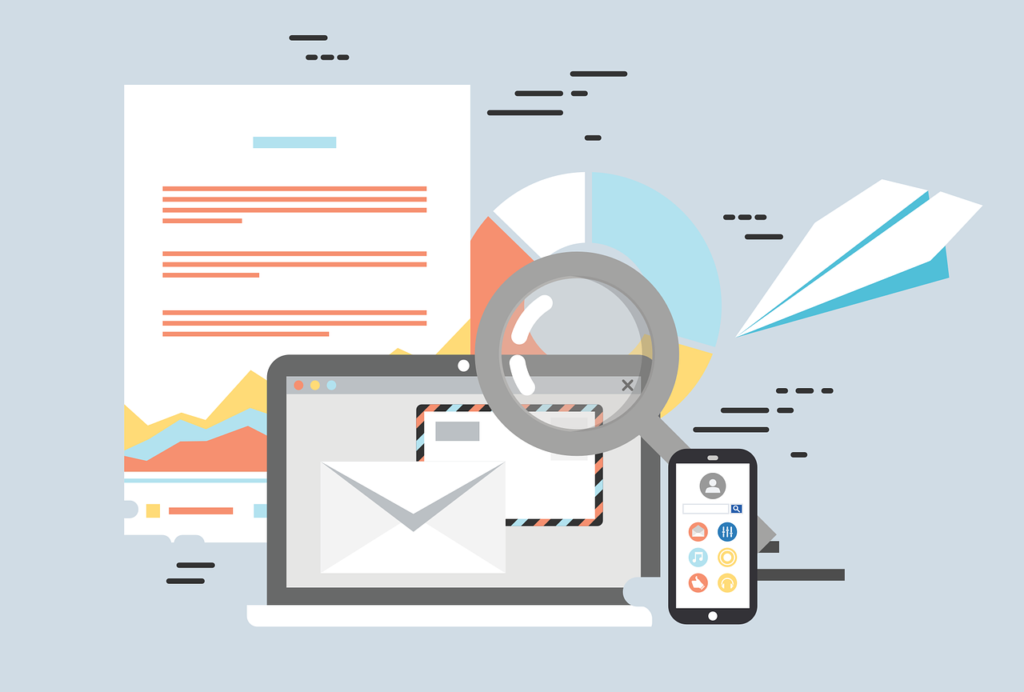This Article has been revised, edited and added to, by Poulomi Chakraborty.
- Understanding Your Audience
- Crafting Compelling Subject Lines
- Creating Engaging Email Content
- Timing and Frequency of Emails
- Subject Line Best Practices
- Content Personalization Strategies
- Analyzing and Improving Campaign Performance
- Leveraging Automation for Efficiency
- Creating High-Quality Content
- Optimizing for Mobile Devices
- Ensuring Deliverability
- Analyzing Campaign Performance
- Crafting Effective Email Campaigns for Different Stages of the Customer Journey
- Integrating Email Marketing with Other Channels
- Future Trends in Email Marketing
- Conclusion
In the digital marketing world, email remains a powerful tool for engaging with your audience. Despite the rise of social media and other communication channels, email marketing continues to deliver impressive returns on investment. However, not all email campaigns achieve their full potential. To maximize engagement, it’s essential to optimize your strategies and tactics.
Optimizing your email marketing campaigns involves more than just crafting a catchy subject line or using a visually appealing template. It requires a deep understanding of your audience, data-driven insights, and the ability to adapt to changing trends. This article will guide you through the essential steps to optimize your email marketing campaigns for maximum engagement, ensuring that your messages resonate with your audience and drive the desired actions.
Understanding Your Audience

Segmentation and Personalization
To create effective email campaigns, you need to understand your audience. One size does not fit all in email marketing. Segmentation and personalization are key strategies to ensure your emails are relevant and engaging.
Segmentation involves dividing your email list into smaller groups based on specific criteria such as demographics, purchasing behavior, or engagement level. This allows you to tailor your messages to different segments, making them more relevant and compelling.
Personalization goes beyond using the recipient’s name in the greeting. It involves leveraging data to create customized content that speaks directly to the recipient’s needs and interests.
For example, if you run an online clothing store, you might send different emails to customers who have purchased men’s clothing versus those who have bought women’s clothing. Personalization can also include recommending products based on past purchases or browsing history.
Comparison: Generic vs. Personalized Emails
Let’s compare the impact of generic versus personalized emails. Imagine receiving an email that starts with “Dear Customer” and offers a generic discount on all products. Now, compare that to an email that starts with “Hi [Your Name], we noticed you recently purchased a pair of running shoes.
Here are some great deals on running gear that you might like.” The personalized email feels more relevant and shows that the sender understands your preferences. This relevance increases the likelihood of the recipient opening the email, clicking through, and making a purchase.
Building Buyer Personas
Creating detailed buyer personas is another effective way to understand your audience. A buyer persona is a semi-fictional representation of your ideal customer based on market research and real data about your existing customers. Personas help you understand your customers’ motivations, challenges, and behaviors, allowing you to craft messages that resonate with them.
For example, if you sell fitness equipment, you might have different personas for professional athletes, fitness enthusiasts, and beginners. Each persona would have different needs and preferences, and your email content should reflect these differences.
Professional athletes might be interested in high-performance gear and training tips, while beginners might need guidance on starting a fitness routine and selecting basic equipment.
Crafting Compelling Subject Lines

The Power of the First Impression
The subject line is the first thing your audience sees in their inbox, making it a critical factor in determining whether your email gets opened or ignored. Crafting compelling subject lines requires a balance between creativity and clarity. A great subject line grabs attention, sparks curiosity, and encourages the recipient to open the email.
Elements of an Effective Subject Line
Effective subject lines are concise and convey a clear benefit or create a sense of urgency. Using actionable language can prompt immediate engagement. For instance, instead of saying “Our Latest Newsletter,” you could use “Unlock Exclusive Deals Today.”
Including numbers or statistics can also make your subject line stand out, as it implies valuable and specific content inside the email.
Personalization and Relevance
Personalizing subject lines can significantly increase open rates. Addressing the recipient by name or referencing their recent activity with your brand can make the email feel more relevant and personal.
For example, “John, Don’t Miss Your Special Discount on Running Shoes” is likely to perform better than a generic subject line. Relevance is key; the subject line should reflect the content of the email and resonate with the recipient’s interests and needs.
A/B Testing for Optimization
A/B testing, also known as split testing, is a method to determine which subject lines are most effective. By creating two versions of an email with different subject lines and sending them to small segments of your audience, you can analyze which version performs better in terms of open rates.
Once you identify the more successful subject line, you can use it for the rest of your audience. This data-driven approach allows you to continually refine your subject lines and improve your campaign performance.
Avoiding Spam Triggers
To ensure your emails land in the inbox and not the spam folder, avoid using certain words and phrases that can trigger spam filters. Words like “free,” “buy now,” and “limited time offer” are often flagged by email providers.
Additionally, excessive punctuation, all caps, and misleading subject lines can also result in your email being marked as spam. Focus on crafting subject lines that are honest, clear, and enticing without resorting to tactics that could jeopardize your deliverability.
Creating Engaging Email Content

The Importance of a Strong Opening
Once your subject line has successfully encouraged the recipient to open your email, the opening line of your email content needs to keep their attention. Start with a compelling introduction that directly addresses the recipient’s needs or interests.
This could be a personalized greeting, a provocative question, or a statement that highlights the benefit of reading further. The goal is to create an immediate connection and entice the reader to continue.
Writing Clear and Concise Content
Engaging email content should be clear, concise, and focused. Avoid lengthy paragraphs and dense text. Instead, use short sentences and break up the content into easily digestible sections. This makes your email more readable, especially on mobile devices. Get to the point quickly and ensure that each section of your email serves a purpose, whether it’s to inform, entertain, or persuade.
Visual Appeal and Design
The visual appeal of your email plays a crucial role in engagement. A clean, professional design with a good balance of text and images can make your email more attractive and easier to read. Use high-quality images that are relevant to your content and brand.
Make sure your email is mobile-friendly, as a significant portion of your audience is likely to open emails on their smartphones. Responsive design ensures that your email looks great on any device, improving the user experience and engagement.
Call-to-Action (CTA)
Every email should have a clear and compelling call-to-action. The CTA is the action you want the recipient to take after reading your email, such as making a purchase, signing up for a webinar, or downloading a resource.
Make your CTA stand out by using a button or a different color. Use persuasive language that creates a sense of urgency or highlights the benefit of taking action, such as “Get Your Discount Now” or “Join the Webinar Today.”
Personalization in Content
Just as with subject lines, personalizing the content of your email can greatly enhance engagement. Use dynamic content to tailor the message to each recipient based on their preferences, behavior, or demographic information.
This could include recommending products based on past purchases, addressing the recipient by name, or providing content relevant to their location. Personalization makes the recipient feel valued and understood, increasing the likelihood of a positive response.
Testing and Optimization
Continuous testing and optimization are essential for maximizing the effectiveness of your email content. Experiment with different content formats, lengths, and tones to see what resonates best with your audience. Analyze metrics such as open rates, click-through rates, and conversion rates to determine what works and what doesn’t. Use these insights to refine your content strategy and improve future email campaigns.
Timing and Frequency of Emails

Finding the Optimal Send Time
The timing of your email can significantly impact its success. Sending your email at the right time ensures that it reaches your audience when they are most likely to engage. The optimal send time can vary based on your target audience and industry. Analyzing past campaign data can provide insights into when your audience is most active. For example, if your emails have higher open rates in the morning, it may be beneficial to schedule future emails during those hours.
Consideration of Time Zones
If your audience is spread across different time zones, it’s important to consider this when scheduling your emails. Sending emails at the wrong time for a significant portion of your audience can result in lower engagement rates. Using email marketing tools that allow you to schedule emails based on the recipient’s time zone can help ensure that your message arrives at the optimal time for everyone.
Balancing Frequency
The frequency of your emails is just as important as the timing. Too many emails can overwhelm your audience and lead to higher unsubscribe rates. On the other hand, too few emails can result in your audience forgetting about your brand. Finding the right balance requires understanding your audience’s preferences and behavior. Regularly monitor engagement metrics such as open rates and click-through rates to determine the ideal frequency for your campaigns.
Testing Different Frequencies
A/B testing can also be useful in determining the best frequency for your emails. Test different sending frequencies with small segments of your audience to see which schedule yields the highest engagement. For example, you might test sending emails weekly versus bi-weekly and compare the results. Use the insights from these tests to adjust your email schedule and optimize engagement.
Subject Line Best Practices
Keeping It Short and Sweet
Subject lines should be concise and to the point. A subject line that is too long may get cut off, especially on mobile devices. Aim for around 50 characters or fewer to ensure that your entire message is visible. A short, clear subject line can effectively capture your audience’s attention and entice them to open the email.
Creating a Sense of Urgency
Creating a sense of urgency in your subject line can encourage immediate action. Phrases like “limited time offer” or “last chance” can prompt recipients to open the email and take action before it’s too late. However, be careful not to overuse urgency tactics, as this can come off as spammy or inauthentic.
Asking Questions
Asking a question in your subject line can pique curiosity and engage your audience. Questions naturally prompt the reader to seek an answer, making them more likely to open the email. For example, “Ready to save on your next purchase?” invites the recipient to find out more.
Using Humor and Creativity
Humor and creativity can make your subject line stand out in a crowded inbox. A clever or funny subject line can catch the recipient’s eye and make them more likely to open the email. However, it’s important to ensure that the humor aligns with your brand voice and resonates with your audience.
Avoiding Spam Triggers
To ensure your emails reach the inbox, avoid using words and phrases commonly associated with spam. Terms like “free,” “buy now,” and excessive punctuation or all caps can trigger spam filters. Focus on creating subject lines that are honest, clear, and relevant to the content of your email.
Content Personalization Strategies
Dynamic Content
Dynamic content allows you to personalize different elements of your email based on recipient data. This can include personalized greetings, product recommendations, or tailored messages based on past behavior. For example, if a recipient has shown interest in a specific product category, you can highlight related products in the email.
Behavioral Trigger Emails
Behavioral trigger emails are sent based on specific actions taken by the recipient. This could include welcome emails for new subscribers, cart abandonment reminders, or follow-up emails after a purchase. These emails are highly relevant and timely, making them more likely to engage the recipient and drive action.
Personalized Recommendations
Providing personalized product or content recommendations based on past behavior can enhance the relevance of your emails. For instance, if a recipient has previously purchased running shoes, you can recommend related products such as running apparel or accessories. This level of personalization shows that you understand their preferences and can provide value.
Location-Based Personalization
Tailoring your emails based on the recipient’s location can make your messages more relevant and engaging. This can include highlighting local events, promotions, or content that is specific to their region. For example, if you have a physical store, you can promote in-store events or sales to recipients who live nearby.
Analyzing and Improving Campaign Performance
Tracking Key Metrics
To optimize your email marketing campaigns, it’s essential to track key performance metrics. These can include open rates, click-through rates, conversion rates, and unsubscribe rates. By analyzing these metrics, you can gain insights into what is working well and where there is room for improvement.
Conducting A/B Tests
A/B testing allows you to compare different versions of your emails to determine which elements perform best. This can include testing subject lines, email content, design, and CTAs. By continually testing and refining your emails, you can optimize engagement and improve overall campaign performance.
Gathering Feedback
Soliciting feedback from your audience can provide valuable insights into how you can improve your email campaigns. This can be done through surveys, direct responses, or analyzing customer interactions. Understanding your audience’s preferences and pain points can help you create more effective and engaging emails.
Continuous Improvement
Email marketing is not a one-time effort but an ongoing process of refinement and improvement. Regularly review your campaign performance, analyze data, and make adjustments based on your findings. Stay informed about industry trends and best practices to ensure your email marketing strategy remains effective and up-to-date.

Leveraging Automation for Efficiency
The Benefits of Email Automation
Email automation can significantly enhance the efficiency and effectiveness of your email marketing campaigns. By automating repetitive tasks, you can save time and ensure that your emails are sent at the optimal time for each recipient. Automation also allows you to create more personalized and timely messages, which can improve engagement and conversions.
Setting Up Automated Campaigns
Setting up automated email campaigns involves creating workflows that trigger emails based on specific actions or conditions. Common automated campaigns include welcome emails, abandoned cart reminders, post-purchase follow-ups, and re-engagement emails. These workflows can be customized to fit your business needs and audience behavior.
Welcome Emails
Welcome emails are the first communication new subscribers receive from your brand. They set the tone for your relationship and provide an opportunity to make a positive first impression. An effective welcome email should introduce your brand, highlight the benefits of subscribing, and encourage further engagement, such as following your social media accounts or exploring your website.
Abandoned Cart Reminders
Abandoned cart emails remind customers who have left items in their shopping cart to complete their purchase. These emails are highly effective because they target users who have already shown intent to buy. Including personalized product recommendations, offering discounts, or creating a sense of urgency can increase the likelihood of converting these potential sales.
Post-Purchase Follow-Ups
Post-purchase emails are sent after a customer has made a purchase. These emails can thank the customer for their purchase, provide order details, and suggest complementary products. Follow-up emails can also include requests for reviews or feedback, which can help build trust and improve future customer experiences.
Re-Engagement Emails
Re-engagement emails target inactive subscribers who haven’t interacted with your emails in a while. These emails can offer special incentives, highlight new products or content, and ask for feedback to understand why the recipient has become disengaged. Re-engagement campaigns can help you maintain a healthy and active email list.
Creating High-Quality Content

Understanding Your Brand Voice
Your brand voice is the unique personality and tone that you use in your communications. It should be consistent across all your emails to create a cohesive and recognizable brand experience. Whether your brand voice is professional, friendly, or playful, make sure it aligns with your overall brand identity and resonates with your audience.
Storytelling Techniques
Storytelling is a powerful way to engage your audience and make your emails more memorable. Sharing stories about your brand, products, or customers can create an emotional connection and inspire action. For example, you could share a customer success story that highlights the benefits of your product or tell the story of how your company was founded.
Visual Content
Visual content can enhance the appeal of your emails and make them more engaging. High-quality images, videos, infographics, and GIFs can break up text and illustrate your message more effectively. Ensure that your visual content is relevant to your email’s purpose and enhances the overall user experience.
Clear and Compelling Calls to Action
Your email’s call to action (CTA) is one of the most critical elements for driving engagement. A clear and compelling CTA tells the recipient exactly what action you want them to take. Use actionable language, such as “Shop Now,” “Download the Guide,” or “Sign Up Today.” Position your CTA prominently in the email and use design elements like buttons or contrasting colors to make it stand out.
Optimizing for Mobile Devices
Mobile-Friendly Design
With a significant portion of email opens occurring on mobile devices, optimizing your emails for mobile is essential. A mobile-friendly design ensures that your emails are easily readable and navigable on smartphones and tablets. Use a responsive design that adapts to different screen sizes, and keep your content concise to accommodate smaller screens.
Simplified Layout
A simplified layout improves the readability of your emails on mobile devices. Avoid using complex designs with multiple columns or excessive images that can slow down loading times. Use a single-column layout, larger fonts, and ample white space to make your emails easy to read and interact with on mobile devices.
Testing on Multiple Devices
Before sending your email campaigns, test them on multiple devices and email clients to ensure they look and function as intended. Email testing tools can help you preview your emails across different platforms and identify any issues that need to be addressed. This ensures a consistent and positive experience for all recipients, regardless of the device they use.
Ensuring Deliverability
Building a Quality Email List
Building a quality email list is crucial for ensuring high deliverability rates. Focus on acquiring subscribers who are genuinely interested in your brand and have opted in to receive your emails. Avoid purchasing email lists, as these often contain unengaged or invalid addresses that can harm your deliverability.
Maintaining List Hygiene
Regularly cleaning your email list helps maintain its quality and improve deliverability. Remove inactive subscribers who haven’t engaged with your emails for an extended period, and address any hard bounces or invalid email addresses. List hygiene practices ensure that your emails reach engaged and active recipients.
Complying with Email Regulations
Compliance with email regulations, such as the CAN-SPAM Act and GDPR, is essential for maintaining trust and avoiding legal issues. Ensure that your emails include a clear and easy way for recipients to unsubscribe, and honor opt-out requests promptly. Clearly state your privacy policy and how you handle subscriber data.
Monitoring Deliverability Metrics
Regularly monitor deliverability metrics, such as bounce rates, spam complaints, and inbox placement rates, to identify and address any issues. High bounce rates or spam complaints can indicate problems with your email list or content. Use these insights to make necessary adjustments and improve your overall deliverability.
Analyzing Campaign Performance
Using Analytics Tools
Email analytics tools provide valuable insights into the performance of your campaigns. Metrics such as open rates, click-through rates, conversion rates, and unsubscribe rates can help you understand how your audience is interacting with your emails. Analyzing these metrics allows you to identify strengths, weaknesses, and areas for improvement.
Setting Benchmarks and Goals
Setting benchmarks and goals for your email campaigns helps you measure success and track progress over time. Establishing key performance indicators (KPIs) aligned with your marketing objectives allows you to focus on the most important metrics. Regularly review and adjust your goals based on your campaign performance and industry standards.
Conducting Campaign Audits
Regular campaign audits involve a thorough review of your email marketing strategy, content, and performance. Identify what is working well and what needs improvement. Look at the overall effectiveness of your email design, subject lines, content, CTAs, and segmentation. Use these insights to refine your strategy and optimize future campaigns.
Continuous Improvement
Email marketing is an ongoing process of learning and adaptation. Stay informed about the latest trends, best practices, and technological advancements in email marketing. Continuously experiment with new ideas, test different approaches, and optimize based on your findings. Regularly update your content and strategies to keep your email campaigns fresh, relevant, and engaging.
Crafting Effective Email Campaigns for Different Stages of the Customer Journey
Awareness Stage: Introducing Your Brand
At the awareness stage, your goal is to introduce your brand to potential customers and spark their interest. Emails at this stage should focus on educating your audience about your brand, products, or services. Use compelling storytelling to highlight your brand’s unique value proposition and share content that addresses the audience’s pain points or interests.
A great example of an awareness email is a welcome series for new subscribers. This series can include a welcome message, an overview of your brand’s story, and an introduction to your most popular products or services. By providing valuable content right from the start, you can make a strong first impression and begin building a relationship with your audience.
Consideration Stage: Providing Valuable Insights
In the consideration stage, your audience is evaluating their options and considering making a purchase. Emails at this stage should focus on providing valuable insights that help your audience make an informed decision. Share in-depth product guides, comparison charts, case studies, and customer testimonials to demonstrate the benefits and effectiveness of your offerings.
For example, if you’re selling a fitness app, you might send an email highlighting a detailed guide on how your app compares to competitors, showcasing unique features and user success stories. This helps potential customers see the value of your app and how it can meet their specific needs.
Decision Stage: Encouraging Conversions
At the decision stage, your audience is ready to make a purchase. Your emails should focus on encouraging conversions by offering compelling incentives and making the purchasing process as seamless as possible. Use clear and persuasive CTAs, offer discounts or limited-time promotions, and provide easy access to purchase links.
An example of an effective decision-stage email could be a special offer email that includes a discount code, free shipping, or a limited-time promotion. Highlight the urgency of the offer and include a strong CTA that directs recipients to complete their purchase. Ensuring that your email design is clean and the purchase process is straightforward can help reduce friction and increase conversions.
Retention Stage: Building Long-Term Relationships
Retaining customers and building long-term relationships is crucial for sustained success. Emails at the retention stage should focus on maintaining engagement, providing ongoing value, and fostering loyalty. This can include personalized product recommendations, exclusive access to new products or services, loyalty rewards, and regular check-ins.
For instance, a post-purchase follow-up email can thank customers for their purchase, provide useful tips for using their new product, and suggest related items they might be interested in. Regularly sending value-driven content, such as educational resources or exclusive deals, helps keep your brand top of mind and encourages repeat business.
Advocacy Stage: Turning Customers into Brand Ambassadors
The advocacy stage involves turning satisfied customers into brand ambassadors who actively promote your brand to others. Emails at this stage should encourage and facilitate advocacy by requesting reviews, offering referral programs, and showcasing customer success stories.
An example of an advocacy email could be a referral program invitation that offers rewards for referring friends and family to your brand. Highlight the benefits of participating in the program and make it easy for customers to share referral links or codes. Additionally, sharing user-generated content and customer testimonials can inspire others to share their positive experiences with your brand.
Integrating Email Marketing with Other Channels
Cross-Channel Consistency
To maximize the impact of your email marketing campaigns, it’s important to integrate them with other marketing channels for a cohesive and consistent brand experience. Ensure that your messaging, branding, and offers are aligned across all channels, including social media, your website, and paid advertising.
For example, if you’re running a holiday promotion, promote it through email, social media posts, and banner ads on your website. Consistent messaging and visuals across these channels reinforce your campaign and increase its overall effectiveness.
Using Social Media to Amplify Your Email Campaigns
Social media can amplify the reach and engagement of your email campaigns. Share snippets or highlights from your emails on your social media platforms to encourage followers to sign up for your email list. Use social media ads to promote your email newsletters or special offers, targeting a broader audience and driving more traffic to your email sign-up page.
For instance, if you send out a monthly newsletter, tease the content on your social media profiles with a call-to-action encouraging followers to subscribe for the full details. Social media contests or giveaways can also be used to grow your email list and increase engagement.
Leveraging Content Marketing
Content marketing and email marketing go hand-in-hand. Use your email campaigns to promote your blog posts, whitepapers, webinars, and other valuable content. This not only drives traffic to your website but also provides your audience with valuable resources that keep them engaged.
For example, if you publish a new blog post, send an email to your subscribers with a brief summary and a link to read the full article. Highlight the key takeaways or benefits of the content to entice recipients to click through. This approach helps position your brand as a thought leader and keeps your audience coming back for more.
Syncing Email Campaigns with Paid Advertising
Integrate your email marketing campaigns with paid advertising efforts to enhance targeting and reach. Use data from your email campaigns to create lookalike audiences for your paid ads, targeting users who share similar characteristics with your email subscribers. Additionally, use retargeting ads to reach users who have engaged with your emails but have not yet converted.
For example, if a segment of your email list shows high engagement but low conversion rates, create retargeting ads to remind them of your offer and encourage them to complete their purchase. This multi-channel approach reinforces your message and increases the likelihood of conversion.
Future Trends in Email Marketing
Artificial Intelligence and Machine Learning
Artificial intelligence (AI) and machine learning (ML) are transforming email marketing by enabling more sophisticated personalization and automation. AI can analyze vast amounts of data to identify patterns and predict recipient behavior, allowing for more targeted and effective email campaigns. Machine learning algorithms can optimize send times, subject lines, and content to maximize engagement.
For example, AI can help you segment your audience more precisely, predict which products a customer is likely to be interested in, and personalize email content accordingly. As AI and ML technologies continue to evolve, their integration into email marketing will become increasingly essential for staying competitive.
Interactive Email Content
Interactive email content, such as polls, quizzes, and carousels, can enhance engagement by allowing recipients to interact with your emails directly. Interactive elements make your emails more engaging and can provide valuable insights into your audience’s preferences and behaviors.
For instance, an email that includes a quiz to help recipients find the best product for their needs can increase engagement and drive traffic to your website. Interactive content also provides a unique and memorable experience that can differentiate your brand from competitors.
AMP for Email
AMP (Accelerated Mobile Pages) for Email is a technology that allows for dynamic, interactive content within emails. With AMP, recipients can perform actions directly within the email, such as RSVP to events, fill out forms, or browse products without leaving their inbox.
This technology can significantly enhance the user experience and increase engagement by reducing the steps required to complete an action. As more email clients support AMP, incorporating it into your email marketing strategy can provide a competitive edge.
Privacy and Data Security
As concerns about privacy and data security continue to grow, ensuring that your email marketing practices are compliant with regulations and respect user privacy is crucial. Be transparent about how you collect, use, and protect subscriber data. Implement best practices for data security and regularly review your compliance with regulations such as GDPR and CCPA.
For example, include clear and easy-to-find links to your privacy policy and provide options for subscribers to manage their preferences. Building trust with your audience by prioritizing privacy and security can enhance your brand reputation and encourage long-term engagement.
Hyper-Personalization
Hyper-personalization takes traditional personalization to the next level by leveraging real-time data and AI to deliver highly relevant and individualized content. This approach goes beyond using the recipient’s name or purchase history, incorporating real-time behavior, context, and preferences to create a truly personalized experience.
For example, hyper-personalized emails might include product recommendations based on real-time browsing behavior, personalized offers based on past purchase history, or content tailored to the recipient’s current location or time of day. This level of personalization can significantly enhance engagement and conversion rates.
Conclusion
Optimizing your email marketing campaigns for maximum engagement involves understanding your audience, crafting compelling subject lines, and creating personalized, relevant content. It’s essential to find the right timing and frequency for your emails and leverage automation to streamline your efforts. Integrating email marketing with other channels, such as social media and content marketing, can amplify your reach and effectiveness. Staying informed about emerging trends like AI, interactive content, and data security ensures your strategies remain cutting-edge and compliant.
By continually analyzing performance metrics, conducting A/B tests, and gathering feedback, you can refine your approach and achieve better results. Email marketing remains a powerful tool to connect with your audience, drive conversions, and build lasting relationships. With a thoughtful, data-driven strategy, you can harness its full potential to meet your marketing goals and stay ahead in the competitive digital landscape.
Read Next
- Beauty Branding: The Secrets Behind Successful Cosmetic Brands
- Tailor Branding: How Customization Elevates Brand Perception
- Tequila Branding: The Art of Crafting a Memorable Spirit Brand
- Digital Marketing for Financial Services: Building Trust and Credibility
- Digital Marketing in the Food and Beverage Sector: Engaging Foodies Worldwide






















Comments are closed.